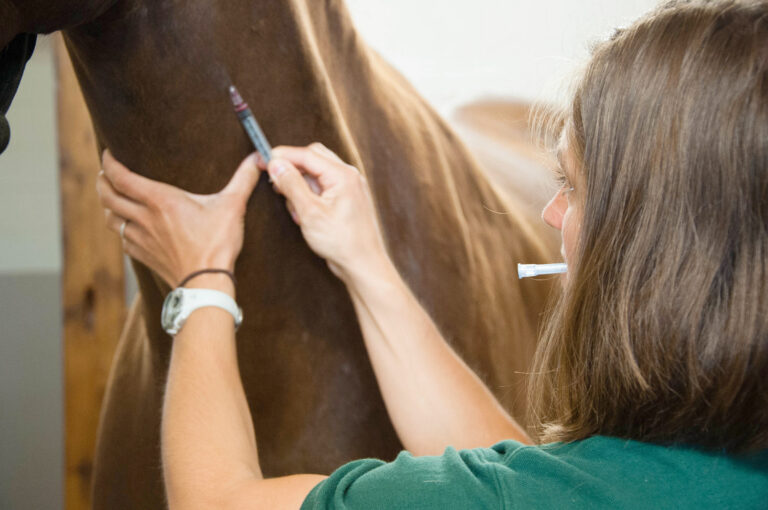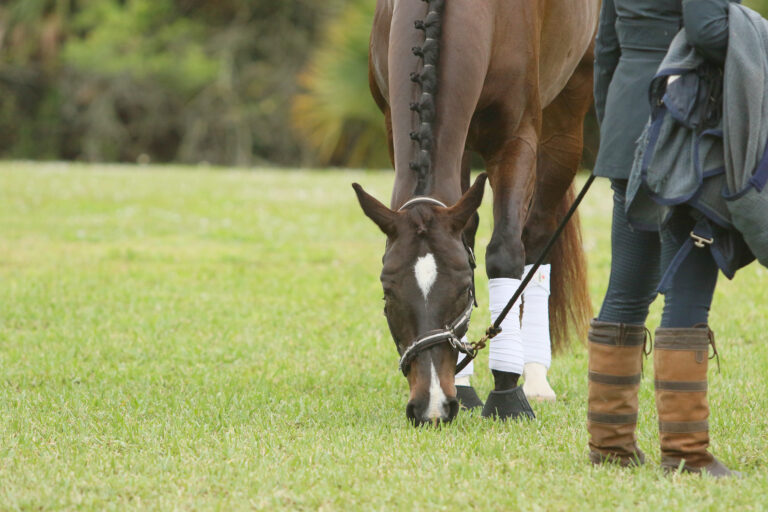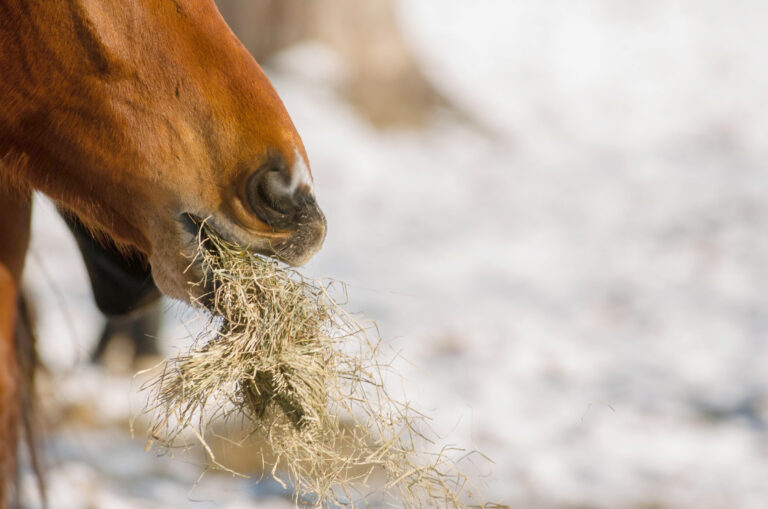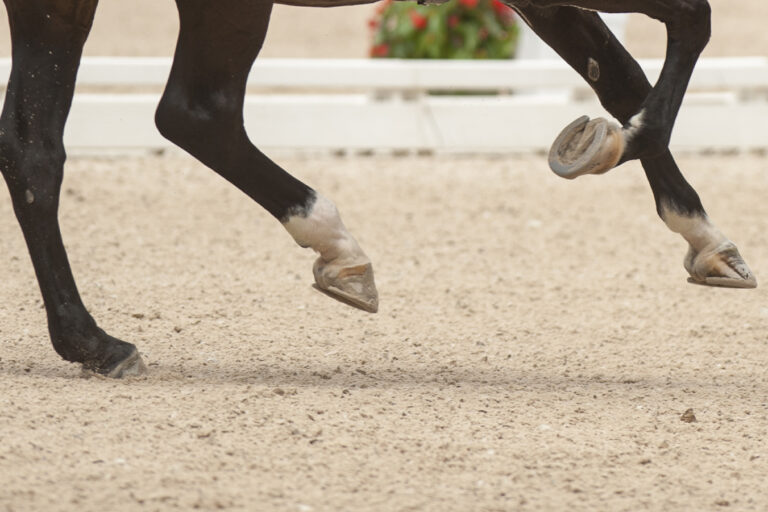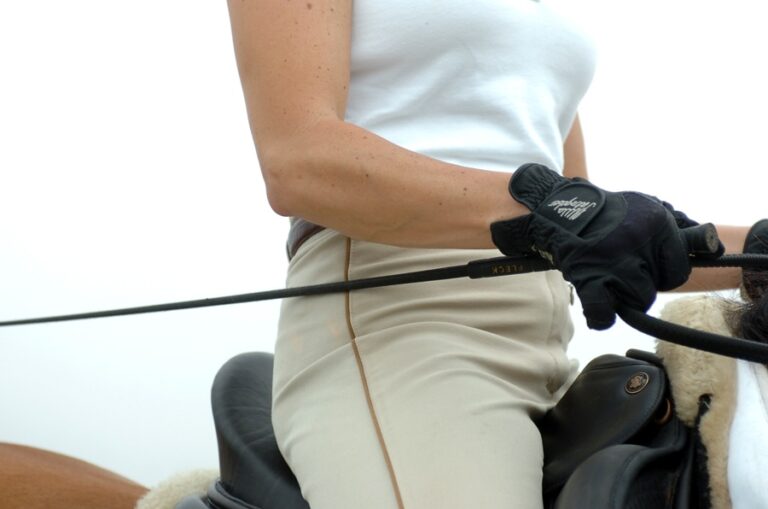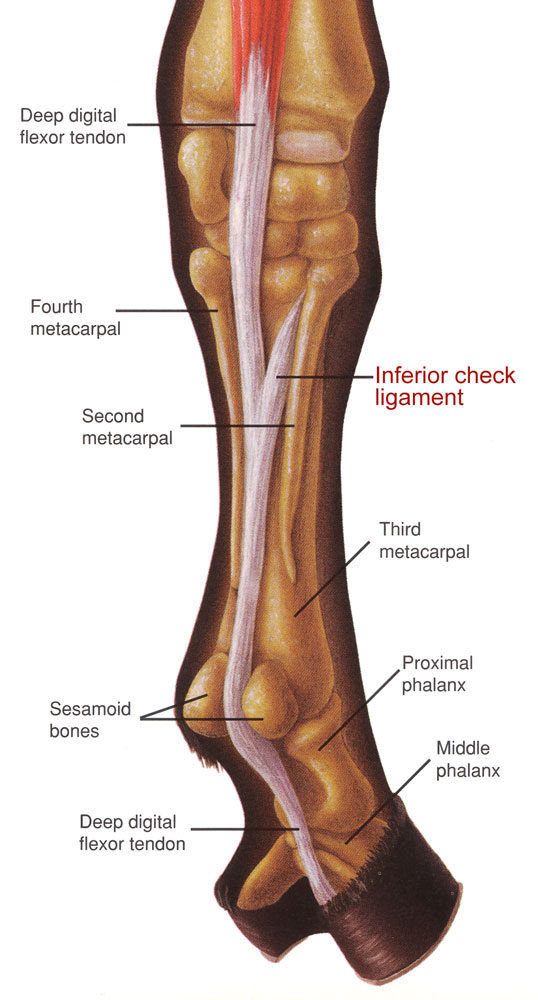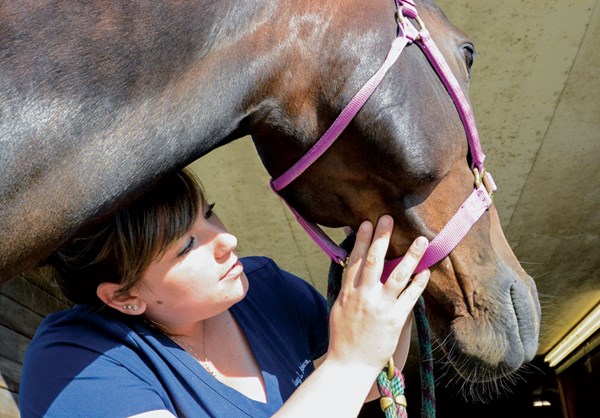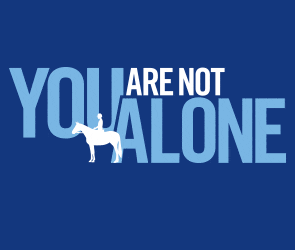Lumps or swellings under the jaw are not uncommon in horses, and whether they will hinder your riding depends on their location and the underlying cause. Lumps that interfere with the bit, noseband or other tack are obviously problematic, while lumps or swelling in the throatlatch may limit movement or even compress the airway when the horse is asked to bring his neck into a more flexed position.
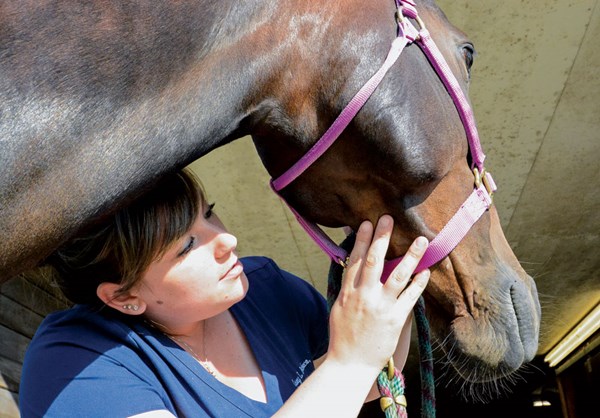
Credit: Dusty Perin
As you can imagine, swelling in the jaw or throat region can influence how a horse accepts the bridle. When a swollen area is under compression or load, such as when we ask the horse to come onto the bit, we can experience all kinds of resistance, ranging from slightly stronger or weaker pressure on the bit to severe, adverse behaviors such as rearing, headshaking and pulling on the reins.
In all cases of a sudden change in contact, it is a good idea to carefully inspect the jaw and throat region. Ask your veterinarian for assistance and advice when you notice abnormalities or you run into clear contact or connection problems.
The anatomy of the head, neck and jaw is complex, and with many different structures found in this region, it is important to determine, if possible, which specific structures are associated with the swelling. Lumps and bumps may result from direct trauma, indicate inflammation or may develop from the accumulation of tissue in a more chronic process.
Evaluation of any bump begins with physically examining the area to determine the exact location and to check for wounds, skin irritation, heat or sensitivity.
Palpation of the lump to determine its characteristics may help identify which tissues are involved. For example, bone will be hard. Additional diagnostic procedures, including radiographs (X-rays), ultrasound, endoscopy or even biopsy, may be necessary to get a complete clinical picture.
While we can’t go over every cause for lumps under the jaw here, we can review the most common sources. These include swollen lymph nodes, reactive salivary glands and dental matters.
Lymph nodes: Horses have two major sets of lymph nodes located near the jaw: the submandibular lymph nodes, found between the mandibles (lower jawbones), and the retropharyngeal lymph nodes, situated near the throat. Lymph nodes are a part of the immune system and they become enlarged when they react to an ongoing process.
Localized infections, such as an abscessed tooth, are likely to result in enlargement of a single lymph node close to the site of infection. In contrast, respiratory illness may result in swelling of one or more nodes. Many viral infections will cause mild lymph-node enlargement that resolves in one to two weeks with no special treatment.
Streptococcus equi, also known as “strangles,” is a bacterial infection that can result in severe enlargement of the retropharyngeal lymph nodes. This type of swelling may be seen and felt just behind the mandible.
Horses with strangles will run a fever and may develop thick nasal discharge. In some cases, the affected lymph nodes may become so enlarged that they put pressure on the horse’s airway.
Reactive salivary glands: Swelling of the salivary glands is commonly seen in horses turned out to pasture in the spring. The parotid glands are the largest salivary glands and are found on both sides of the head, extending from the jaw to the base of the ear.
These glands produce saliva, and affected horses may drool excessively. A toxin produced by a fungus on clover is believed to be at the root of this reaction. This condition is usually not painful, but swelling may be significant enough to prevent the horse from flexing well at the poll.
Simply avoiding pasture turnout for a few weeks usually remedies the problem. Rarely, the salivary glands become infected or develop blockages that can also result in swellings. You should seek advice if swellings in this area come up at other times of year or don’t resolve quickly.
Dental matters: Teething bumps, or eruption cysts, are hard enlargements seen along the jawline in horses younger than 5 years of age. The bumps are caused by changes in the bone as the permanent premolar and molar teeth emerge and displace the deciduous, or “baby,” teeth.
Several such swellings can usually be felt at the same time and are equal in size. They should not be painful or hot. Occasionally bumps may also be noted along the bridge of the nose as a similar process can occur with the upper teeth. In general, teething bumps are strictly cosmetic and should spontaneously resolve as the horse matures.
Occasionally, teething bumps are an indication of problems in shedding of the deciduous teeth, commonly known as “retained caps.” An oral exam by a veterinarian or veterinary dentist can be helpful to determine if more significant dental problems exist.
Other causes of lumps near the jaw include local trauma resulting in soft- tissue injury and even fractures, insect bites and, very rarely, tumors.
You should consult with your veterinarian about any new swelling that persists for more than a few days or any lumps that are enlarging, painful or located in areas that interfere with your tack or riding.
Kimberly Johnston, VMD, Dipl. ACVS, graduated from the University of Pennsylvania and New Bolton Center. She became a diplomate of the American College of Veterinary Surgeons in 2010, specializing in sports medicine and orthopedic surgery. In her free time, she enjoys riding her 14-year-old Thoroughbred, Jazz, schooling Third Level. She and her FEI-dressage-riding husband, Rob van Wessum, DVM, operate Equine All-Sports Medicine Center in Mason, Michigan.


